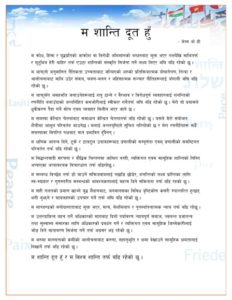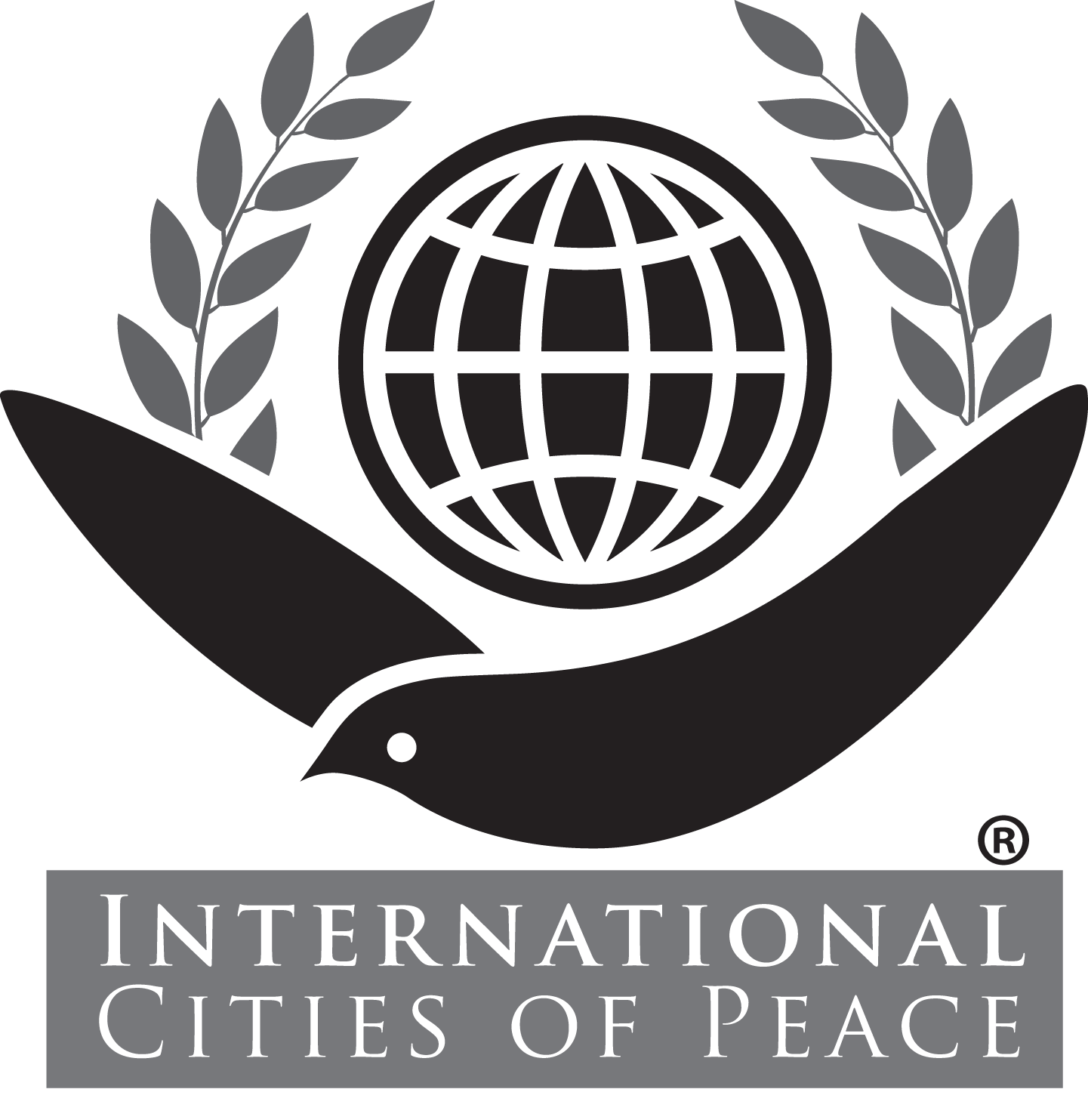Kathmandu, Nepal: City of Peace
Welcome Lucy Needham to the International Cities of Peace Advisory Council. Lucy and long-time ICP leader Bishnu Hari Tripathi, along with hundreds of citizens of Nepal, have created a loosely organized group dedicated to creating a culture of peace in Kathmandu and beyond.
Note: Introduction page with information primarily at the time of joining International Cities of Peace. For updates, please contact the liaison.
Vision: To create a culture and raise the profile and hope of peace in Kathmandu, which is experiencing troublsome times in its long history.
On April 22nd, 2012 a small group of Nepalis interested in promoting the concept of the International Cities of Peace met with long term foreign resident and Peace Ambassador, Lucy Needham, at her home in Kathmandu, Nepal . This group is a nice cross section of society, comprised of people of different social backgrounds, age, gender, ethnicity, and religions.
A tremendous effort to gather signatures from a diverse population was mounted, including translating the documents for International Cities of Peace into Nepali (example shown).
Our vision is thus quite simple: to foster peace first in ourselves and our families and those closest to us, then in our friends and colleagues – branching out across the valley – and later across Nepal, encouraging peaceful activities which will engender a just/fair future in which we can all live and prosper together safely with hope for our children and future generations.

Peace Ambassador Program
Progress: Skilled craftsmen like the Thapahiti metal statue makers Kaji and Amir Shakya, Malpi Institute student, Sony Sherpa, Nurse Sunita Maharjan, Mac computer technician, Rajat Thapa, Tibetan Buddhist monk, Lopon Tashi, and nun, Ani Barbara, graduate student, Bishnu Hari Tripathi, Hindu spiritual teacher/practitioner taxi driver, Shanker Bhurtel, and others sat and discussed the situation private residents of greater Kathmandu Valley find themselves in these days. As the world imagines, we all live in a wonderful exotic Himalayan city.
What most outsiders don’t realize, however, is that this city runs on little or no electricity 15 or more hours every day, little water, little but expensive fuel both for transport and cooking, daily cost of living increases, all without formal government for the past three years. At this moment rallies, bandhs (total closures of everything! no vehicles ‘ply’), demonstrations, hunger strikes, and other programs continue on a daily basis to pressure the government, political party leaders, and Constituent Assembly members to complete the drafting of the new constitution.
As the deadline of the 4th extension of the Constituent Assembly approaches, expectations of this group, and the public at large, for a new Constitution to be produced by May 28th, were not high. Residents from municipalities of Kathmandu, Patan/Lalitpur, and Bhaktapur, Kirtipur and Madhyapur Thimi grapple daily with this chaotic and basically anarchic state of affairs. The great potential for peace inherent in the valley is understood by all, but, it takes a lot of imagination sometimes to believe that things will work out for the best anytime soon…
MISSION
So, how could we come up with a vision and mission statement for Kathmandu as an International City of Peace? There are already countless groups, local NGOs, INGOs, government offices and foreign embassies all working on the promotion of Peace and Freedom/human rights in Nepal, along with visions of the alleviation of human suffering, promotion of sustainable development, Public Health, etc. They have a very big agenda.
Our little group spoke about a different idea. To create a group like ours to work and promote peace on a small scale, without any particular leader or agenda other than learning to live harmoniously with everyone, learning to listen and discuss with all these other new friends with respect and open-ness. It was decided that our own project would involve a much more modest agenda of ourselves and our immediate family, friends, colleagues, and even total strangers discussing “Peace” – and what it means to us… The general consensus is that everyone wants to live safely with his/her family, in good health, with roofs over their heads, and food in the bellies of all… prospering to such an extent that the children become well educated, and agents of change in their society. Each founder member went out to their respective homes/circles of friends at school and work over a two week period to discuss our aim and obtain signatures of those wanting to be part of the process.
Kathmandu as an International City of Peace is an idea that sometimes feels rather far-fetched. The prospect of any new government with honest good intentions towards the people of Nepal sounds implausible. All could acknowledge the potential for the country with a new government, and their desire for peace. In the long run, whether or not Nepal soon attains a Constitution and establishes a government in place of the existing Constituent Assembly, it would probably be best to not wait around and rely on those ‘authorities’ to get anything done in the neighborhoods…better to talk to each other and see how to work together locally, with a new spirit of openess and respect for each other, regardless of social group, gender, ethnicity or caste.
CHALLENGES
Everyone wants to live in Peace. All agree they are willing to work/contribute towards whatever is necessary to make Kathmandu a true City of Peace. It may take a long time to achieve, with so many obstacles in the way. We do not have the means to move through the stated 4 steps to becoming an International City of Peace, due to the lack of government, thus no municipal leaders to make resolutions and proclamations to formalize an International City of Peace yet. The intention to live in peace and promote it, is there, however, and was explained to everyone signing the Letter of Intent. We will start small with ourselves, becoming less self-centered, more all inclusive of everyone around, without need of funds from outside, to be agents of peace in Nepal.
Over the coming months, everyone signing the ICP Letter, will continue to discuss what they can do to help make the City of Peace a reality. Every little effort is acceptable. No money is needed. Some groups think they will work together to prepare their neighborhoods for a potential earthquake; some bands – classical Indian/Nepali and punk, jazz, etc will dedicate their concerts to the Cities of Peace, as well as the Summer of Peace 2012;. Non-governmental organizations already involved in Peace activities will continue to be contacted, and schools encouraged to include Peace Studies in their curriculum. It will be a long slow process, but nearly 1000 individuals have made their declaration of an intention to promote peace in their valley.
SUPPORT APPRECIATED
Due to the donations of some fine people from International Cities of Peace, the group in Kathmandu received a digital camera to use in their exploits.
About Kathmandu, Nepal (from Wikipedia)
the capital and, with close to one million inhabitants, the largest metropolitan city of Nepal. The city is the urban core of the Kathmandu Valley in the Himalayas, which contains two sister cities: Lalitpur (Patan), 5 kilometres (3.1 mi) to its south and Bhaktapur or Bhadgaon, 12 kilometres (7.5 mi) to its east, and a number of smaller towns. In the last census (2001), the city of Kathmandu had 671,846 inhabitants. Population estimates for 2005 were 790,612 and for 2010 they stood at 989,273.[2][3] The municipal area is (50.67 square kilometres (19.56 sq mi)) and the population density is 19,500 per km.
The city stands at an elevation of approximately 1,400 metres (4,600 ft) in the bowl-shaped valley in central Nepal surrounded by four major hills, namely: Shivapuri, Phulchowki, Nagarjun and Chandragiri. Kathmandu valley is part of three districts, Kathmandu District, Lalitpur District and Bhaktapur District, with the highest population density in the country and accounting for about 1/15 of its population.
Kathmandu, as the gateway to Nepal Tourism, is the nerve centre of the country’s economy. With the most advanced infrastructure among urban areas in Nepal, Kathmandu’s economy is tourism centric accounting for 3.8% of the GDP in 1995–96 (had declined since then due to political unrest but has picked up again).
The city’s rich history is nearly 2000 years old, as inferred from an inscription in the valley. Its religious affiliations are dominantly Hindu followed by Buddhism. People of other religious beliefs also live in Kathmandu giving it a cosmopolitan culture. Nepali is the common language of the city, though many speak the Nepal Bhasa as it is the center of the Newar (meaning: citizens of Nepal) people and culture. English is understood by the educated population of the city. Besides a significant number of the population speaks any of the foreign languages like : Hindi, French, German, Chinese, Hebrew, Korean etc. The literacy rate is 98% in the city.
DO YOU THINK YOUR COMMUNITY CAN BE A CITY OF PEACE? SEND AN EMAIL!
Note: If information or photos used here are copyrighted, please contact us and we will immediately delete the copyrighted material.
